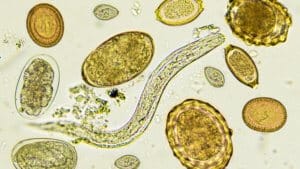What is Pyrrole disorder and is it the cause of my Anxiety?

What is Pyrrole disorder and is it the cause of my Anxiety?
Pyrrole disorder is also known as Pyrrole Disease, Mauve Factor, Kryptopyrroluria and Pyrroluria. Pyrrole Disorder is a condition that can contribute and cause many mental health-related symptoms including anxiety and depression. At our Perth clinic, Advanced Functional Medicine, we commonly test and provide treatment of pyrrole disorder.
Pyrrole disorder is a condition that can be treated effectively and patients show a quick and positive response to treatment.
We don’t hear of Pyrrole disorder too often and many mainstream doctors don’t believe it exists. Although identified and studied since the 1950s, chances are your doctor has never even heard of it. Much research on this topic has been completed by Dr. William Walsh and Dr. Carl Pfeiffer.
You may be surprised to know, however, that 10% of the population is known to suffer from Pyrrole Disorder. Symptoms are wide-ranging and the list of associated conditions is long, many symptoms, however, are associated with mental health including anxiety, low mood, poor sleep, disrupted appetite and digestion and more.
When patients discover they have Pyrrole disorder and are properly treated, their lives improve immeasurably.
What is Pyrrole Disorder?
Pyrrole disorder is a condition in which zinc and pyridoxine (vitamin B6) are excreted in high amounts into the urine.
Elevated pyrroles are found in the urine due to abnormality in the synthesis of haemoglobin in the body.
Haemoglobin is a protein in the red blood cells that carries oxygen throughout the body.
Pyrroles are chemicals that are the by-products of the haemoglobin synthesis which have no known function, so they are usually just excreted into the urine.
Pyrroles have also been found to have an affinity to zinc and pyridoxine (vitamin B6) and may excrete these nutritional molecules into the urine in high amounts.
While it is normal for humans to have low levels of pyrroles in their urine, as much as up to 10% of individuals have an abnormality in their ability to metabolise and synthesise haemoglobin, resulting in elevated pyrroles in their urine. The excretion of zinc and pyridoxine (vitamin B6) can result in a severe deficiency of these two important nutrients in the body. 1
Vitamin B6 is essential for neurotransmitter production, metabolising fats and over 100 other enzyme-catalysed reactions in your body.
Zinc is needed for strong immunity, skin and hair growth, stomach acid production and around 200 other enzymatic processes. A low zinc level also creates an environment that encourages the accumulation of opportunistic heavy metals. An imbalance in the zinc to copper ratio is also common, causing many health issues.
As vitamin B6 and zinc are involved in so many bodily processes, deficiencies can wreak havoc on your health causing a range of seemingly unrelated symptoms.
Pyrrole disorder can lead to a severe deficiency of nutrients throughout the body and may also result in poorly functioning enzymes including MTHFR.
Kryptopyrroles may also bind to biotin, manganese, chromium, magnesium, omega 6s (arachidonic acid) and other important nutrients, excreting them from the body via the kidneys causing further nutrient deficiencies.
What symptoms will you have if you have a Pyrrole Disorder?

Pyrrole disorder symptoms can include (but are not limited to):
- Anxiety
- Mood swings
- Depression
- Poor morning appetite
- Nausea
- A tendency to be histrionic (dramatic)
- Poor stress tolerance
- Digestive issues, allergies, and food sensitivities
- Sensitivity to noise and lights
- Poor dream recall (however, may have tendency to recall only nightmares)
- Chronic dry skin
- Poor sleep and insomnia
- Increased tendency towards infection and illness
- Joint pain
- Delayed puberty
- Tend to have only one or two close friends
- Bad breath
- Excess reactions to drugs and alcohol
- Fatigue
- Poor wound healing
- Memory issues
- Social anxiety 2
Physical attributes associated with Pyrrole disorder
For some Pyrrole Disorder sufferers, they can also have multiple abnormalities in their physical appearance. Some of the more common physical appearances associated with Pyrrole Disorder include:
- Acne
- Early greying of hair
- Pale skin
- Overcrowding of teeth
- Skin appears paper-thin
- Stretch marks
- Pigmentation of skin
- Inability to tan
- Lack of hair on eyebrows or eyelashes
- White spots on fingernails 3
Conditions and behaviours associated with elevated pyrroles
- Acute Intermittent Porphyria
- ADD/ADHD
- Alcoholism
- Allergies
- Asperger’s Syndrome
- Autism
- Bi-Polar Disorder
- Criminal Behaviour
- Down Syndrome
- Epilepsy
- Learning Difficulties
- Lung Cancer
- Manic Depression
- Neurosis
- Post Natal Depression
- Schizophrenia
- Substance Abuse
- Tourette’s Syndrome
- Violent Offenders 4
What causes Pyrrole Disorder?
Pyrrole disorder has a genetic predisposition, although no specific gene has been identified as yet. Practitioners see the condition being passed down from one generation to the next, particularly in families with a strong history of mental illness, trauma, childhood abuse, and substance abuse.

It can also be brought on when stress, emotional or environmental, causes an imbalance in your body’s biochemistry. Vitamin and mineral deficiencies, heavy metal toxicities, copper toxicity, poor digestion, and intestinal hyper-permeability can all contribute to it occurring in the body.
It is a marker of oxidative stress and leaky gut, SIBO and gut dysbiosis are often contributing factors.
Since we don’t know its exact genetic origin, it can be a ‘chicken or the egg’ situation because it can occur after at the onset of a highly stressful and traumatic incident that has taken its toll on the body. This would suggest that people may have a genetic predisposition to producing excess pyrroles which manifests when you are under stress.
How was Pyrrole disorder discovered?
Pyroluria was identified in the 1950s by Dr. Abram Hoffer, who detected “Mauve Factor” (HPL) in the urine of schizophrenic patients and successfully treated them with large doses of Vitamin B3. Dr. Humphrey Osmond and Dr. Carl Pfieffer similarly reported high Mauve factor in patients experiencing psychosis, alcoholism and behavioural disorders in children. After giving their patients doses of zinc and vitamin B6, they noted significant improvements in the health of their patients. 5
How can Pyrrole Disorder be treated?
At Advanced Functional Medicine, we see many patients with Pyrrole disorder. With such a wide range of symptoms, pyroluria is frequently misdiagnosed, and therefore often treated inappropriately.
If you suspect you have the condition, we will perform a pyrrole test which will assess the level of pyrroles found in the urine. Results from 10-20 mcg/dL of pyrroles are considered borderline. Above 20 mcg/dL is considered positive for pyroluria. 6
You will also undergo blood tests to measure your zinc to copper ratio and your caeruloplasmin levels.
Depending on your presentation and symptoms, we may also suggest further testing that may include stool analysis, SIBO breath testing, extensive blood chemistry, and a hair tissue mineral analysis.
Pyrrole disorder supplements
Patients with Pyrrole disorder generally respond very well to nutritional treatments that emphasize zinc and B6 supplementation.
Because treatment for pyroluria is nutritional, rather than pharmacological, some adjustments may be necessary to determine the correct amount of zinc and B6 supplementation on an individual basis.
Pyroluria supplements also contain several other nutrients in order to provide the most effective treatment:
Manganese
This vital nutrient is depleted when zinc is taken at the high levels necessary for treating pyroluria. Manganese is necessary for the metabolism of certain proteins; it is also important to joint development and neurotransmitter production.
Magnesium
Taking B6 in large amounts can deplete magnesium levels; adding magnesium can reduce irritability and hypersensitivity to light and sound.
Niacinamide (Vitamin B3)
This nutrient is necessary for the production of tryptophan, which in turn is necessary for the production of serotonin. Taking niacinamide helps to speed the pyroluria recovery process.
Vitamin C and Pantothenic Acid
These nutrients help to rebuild adrenal glands that have been exhausted from coping with the ongoing tension caused by pyroluria; adding them to pyroluria supplements allows patients to overcome the weakness and fatigue they often feel. 7
Supplementation of these nutrients is needed to reduce HPL levels and balance your body’s chemistry. Often, many times the recommended dietary allowance (RDA) may be needed to achieve this. Depending on other conditions you might have, improvements can often appear within a week.
Treatment sounds simple, but it is essential to tailor specific doses for you and to start low and work up. If supplementation is started too swiftly, side effects such as copper dumping, tinnitus and a worsening of anxiety may result. Associated gut infections and other imbalances in the biochemistry need to be treated to achieve long-lasting results.
How we can help you
At Advanced Functional Medicine, our experts look at you as a whole person – in the context of your entire life. We will address all symptoms, evaluate your entire health and medical history, use functional and standard testing, and treat accordingly.
Although the idea of Pyrrole disorder being a ‘condition’ is controversial, its discovery has proved extremely valuable to the many people who have suffered from life-long anxiety, depression, mood swings, insomnia, behavioural disorders, addictions and gut issues.
Pyrolle Disorder treatment and recovery
People with mild-moderate pyroluria usually have a fairly rapid response to treatment if no other chemical imbalances are present. People with severe pyroluria usually require several weeks before progress is seen and improvement may be gradual over 3 – 12 months. 8 However, it is important to remember that treating this disease is an ongoing, lifelong process; those who discontinue treatment typically experience a near-immediate return of their symptoms.
Ongoing dosages of minerals can be greatly reduced with patients that work on their gut health, the clearance of viral and bacterial pathogens and their absorption of nutrients. Pyrrole patients that continue to require high doses of nutrients nearly always have some or all of these underlying factors.
The majority of our patients who start treatment for pyroluria experience an almost immediate and significant reduction in symptoms that have been experiencing them for many years. They report being able to finally sleep well, have more energy, have stable moods, are less anxious and feel like they can face the world with a bit more confidence.
Get in touch
If you would like more information on testing, treatments and understanding Pyrrole disorder, please contact us at 1800 11 22 36 or complete the form below.




